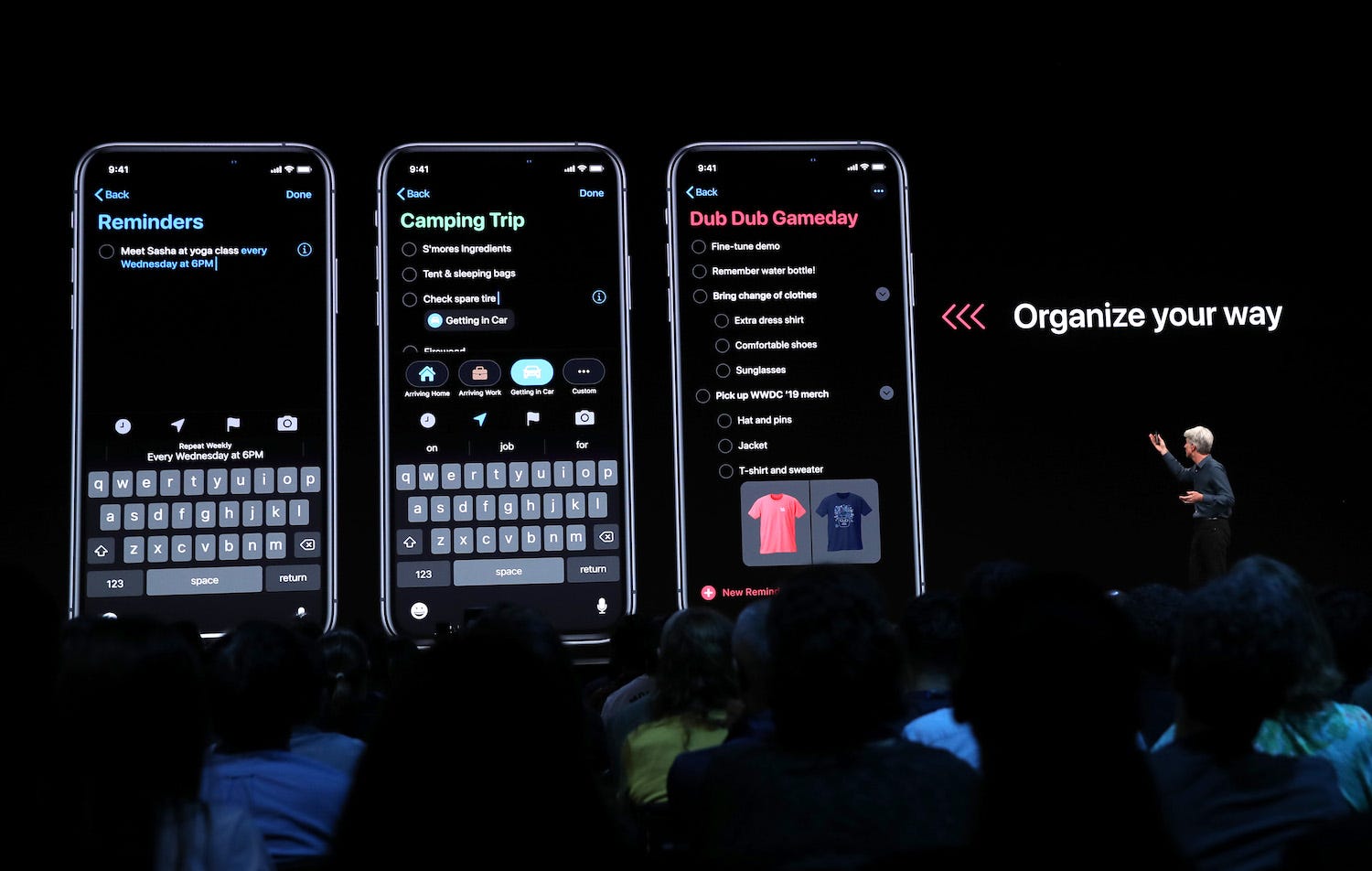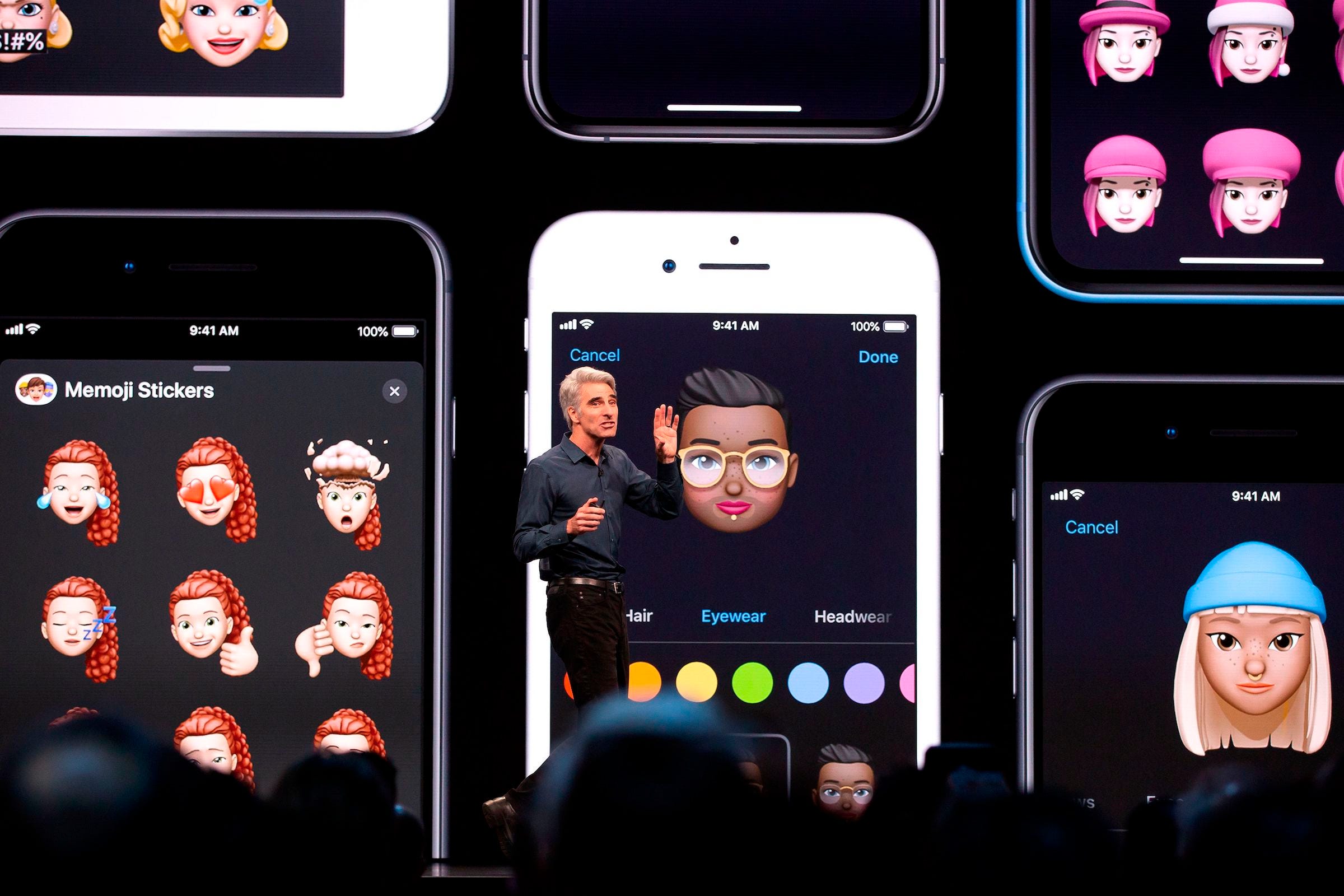Welcome to the December 27, 2019 edition of ACM TechNews, providing timely information for IT professionals three times a week.
Please note: In observance of the New Year holiday, TechNews will not be published on Monday, December 30, or Wednesday, January 1. Publication will resume Friday, January 3.
ACM TechNews mobile apps are available for Android phones and tablets (click here) and for iPhones (click here) and iPads (click here).
To view "Headlines At A Glance," hit the link labeled "Click here to view this online" found at the top of the page in the html version. The online version now has a button at the top labeled "Show Headlines." |
 Russia Announces 'Successful Test' of Its Unplugged Internet
BBC News Russia Announces 'Successful Test' of Its Unplugged Internet
BBC News
Jane Wakefield
December 24, 2019
Russia's Ministry of Communications announced a successful test of a nationwide alternative to the Internet and claimed ordinary users did not detect any changes. The project entails restricting the points at which Russia's version of the Internet connects to its global counterpart, giving the government more control over citizens' accessibility. The effort also involves obstructing or regulating data transmission via undersea cable or nodes through cooperation of domestic Internet service providers; Russia then would have to develop an alternative system. Observers fear this could spark similar moves by authoritarian regimes and repress free speech, although Justin Sherman at the New America think tank said success is not guaranteed. Said Sherman, "Without more information about this test ... it's hard to assess exactly how far Russia has progressed in the path towards an isolatable domestic Internet."
|
 No 'Magic Bullets' in Fight Against Online Abuse, but 'Spiders' Help
The New York Times No 'Magic Bullets' in Fight Against Online Abuse, but 'Spiders' Help
The New York Times
Gabriel J.X. Dance
December 23, 2019
The Inhope global network of child-protection hotlines is on the front line of combating the online sharing and viewing of child abuse-related imagery, alerting both technology firms and law enforcement officials of such material. These hotlines are engaged in an arms race with child predators, who use technology to thwart the latest techniques to unmask them. The Canadian Center for Child Protection deployed a new software tool called Arachnid to more efficiently take down malefactors, while the U.K. hotline and others developed automated algorithms—known as spiders—to crawl the Web and exponentially boost their alerts by ending reliance on responding to individual tips. Inhope also uses improved software to coordinate the growing number of abuse reports, downloading and sharing such content with law enforcement via a data center at Interpol in France. In almost every case, the software can identify the country hosting the imagery.
*May Require Paid Registration
|
First Chip-to-Chip Quantum Teleportation Harnessing Silicon Photonic Chip Fabrication
University of Bristol News
December 23, 2019
Scientists at the U.K.'s University of Bristol and the Technical University of Denmark built chip-scale devices that generate and manipulate single light particles within programmable nanoscale circuits. The chips can encode quantum data in light produced inside the circuits and can process the information with high efficiency and low noise, potentially increasing the ability to develop more complex quantum circuits needed in quantum computing and communications. The researchers' demonstration of chip-to-chip quantum data teleportation enabled photons on either chip to share a single quantum state. Each chip was then programmed to execute tasks that employed quantum entanglement. Demonstrations included 91% high-fidelity quantum teleportation, entanglement swapping, and four-photon GHZ states. Former Bristol researcher Jianwei Wang said, "In the future, a single [silicon]-chip integration of quantum photonic devices and classical electronic controls will open the door for fully chip-based [complementary metal-oxide semiconductor]-compatible quantum communication and information processing networks."
|
Model Beats Wall Street Analysts in Forecasting Business Financials
MIT News
Rob Matheson
December 19, 2019
Massachusetts Institute of Technology (MIT) researchers have developed an automated model that significantly outperforms humans in predicting business sales using only anonymized weekly credit card transactions and three-month earnings reports. The researchers used the model to predict quarterly earnings of more than 30 companies, and found that it outperformed the combined estimates of expert Wall Street analysts on 57% of predictions. The human analysts had access to any available private or public data and other machine learning models, while the MIT model used a very small dataset of the two data types. The researchers used a variation of the standard inference algorithm, called Kalman filtering or Belief Propagation. This technique uses data measurements observed over time, containing noise inaccuracies, to generate a probability distribution for unknown variables over a designated timeframe.
|
Companies Outside Tech Jump Into AI Research
The Wall Street Journal
Elliot M. Kass
December 20, 2019
Non-technology-focused businesses are establishing artificial intelligence (AI) research facilities in places like Silicon Valley and Toronto, Canada, to acquire more AI experience and realize its potential. Gartner analyst Svetlana Sicular said many corporations have flocked to Silicon Valley to tap the large pool of talent and collaborate with others in their industries. For example, agricultural-equipment manufacturer John Deere said it is easier to draw systems engineers and data scientists at its San Francisco outpost than at its Illinois headquarters, as well as work with other agritech firms in the Valley. The outpost oversees the John Deere Operations Center, a cloud-based app used by growers to analyze data collected by vehicles on about 150 million acres, and boost cultivation efficiency. Meanwhile, electronic-device maker LG Electronics is exploring deep/machine learning at its Toronto research center, concentrating on machine vision, voice recognition, and video motion detection for eventual commercialization.
*May Require Paid Registration
|
 Liquid Metal Wearable Pressure Sensor Created for Health Monitoring Applications
KAIST Liquid Metal Wearable Pressure Sensor Created for Health Monitoring Applications
KAIST
December 20, 2019
Researchers at the Korea Advanced Institute of Science and Technology (KAIST) in South Korea developed a wearable pressure sensor for health monitoring applications that conducts sensitive, accurate, and continuous measurement of physiological and physical signals. The researchers three-dimensionally printed a rigid microbump array integrated with the master mold for a liquid metal microchannel to form the sensor. This combination gives the sensor a very low detection limit and better pressure sensitivity versus previous liquid metal-based pressure sensors. The sensor exhibits a negligible signal drift over 10,000 cycles of pressure, bending, and stretching, and has excellent stability under various environmental conditions. KAIST's Inkyu Park said, "We expect [the sensor] to be used in healthcare applications, such as the prevention and the monitoring of the pressure-driven diseases such as pressure ulcers in the near future."
|
Apple Opens Public Bug Bounty Program, Publishes Official Rules
ZDNet
Catalin Cimpanu
December 20, 2019
Apple has formally opened its bug bounty program to all researchers and outlined the program's rules on its website. The company now accepts exploits in iPadOS, macOS, tvOS, watchOS, and iCloud in addition to iOS, and has upped its maximum bounty from $200,000 to $1.5 million. Submitted vulnerabilities must be novel, impact multiple platforms, function on the latest hardware and software, and affect sensitive components to qualify for the top $15 million reward. Apple will add a 50% bonus plus the regular reward for any exploit in beta releases, and a 50% bonus for regression bugs—but entrants must include full exploit chains for any zero-click or one-click vulnerabilities to qualify for bounties. Apple security researcher Patrick Wardle said, "Requiring an exploit puts the onus on the researcher ... but also then will help Apple quickly and fully understand which bugs should be prioritized and thus fixed [first]."
|
 A Soft Robotic Insect that Survives Being Flattened By a Fly Swatter
Ecole Polytechnique Fédérale de Lausanne (Switzerland) A Soft Robotic Insect that Survives Being Flattened By a Fly Swatter
Ecole Polytechnique Fédérale de Lausanne (Switzerland)
Laure-Anne Pessina
December 18, 2019
Researchers at Ecole Polytechnique Fédérale de Lausanne (EPFL) in Switzerland have developed a soft robotic insect that uses artificial muscles to move at three centimeters a second. The team developed two versions of the soft DEAnsect robot: one that is tethered using ultra-thin wires and can be folded, hit with a flyswatter, or squashed by a shoe without impacting its ability to move; the second version is an untethered model that is fully wireless and autonomous, weighs less than one gram, and carries its battery and all the electronic components on its back. DEAnsect is equipped with dielectric elastomer actuators (DEAs)—a type of hair-thin artificial muscle that propels it forward through vibrations—that allow it to move over different types of terrain.
|
As Georgia Rolls Out New Voting Machines for 2020, Worries About Election Security Persist
The Washington Post
Neeta Satija; Amy Gardner; Joseph Marks
December 23, 2019
The state of Georgia is preparing to deploy 30,000 new touchscreen voting machines for the presidential primaries in March, despite a federal judge's warning that the systems are insecure and unreliable. Election security experts also worry that the machines are prone to intrusions or malfunctions, and that the paper records they generate will not be sufficient for verified vote audits. Although Congress has allocated some $400 million in funding for states' election administration, there is no law specifying that the money must be spent on security measures. Election officials note most voters do not check to ensure the paper printout of Georgia's new voting machines matches their voting choices. Georgia Institute of Technology's Wenke Lee said, "You only have a false sense of security and accountability. You're spending many, many tens of millions of dollars for something that's just not even better."
*May Require Paid Registration
|
Using Light to Encrypt Communications
University of Twente (Netherlands)
K.W. Wesselink
December 20, 2019
Researchers at the University of Twente (UT) in the Netherlands have strengthened data against attacks by quantum computers, by accelerating light-particle transmission speed. Standard Quantum Key Distribution systems encrypt data using photons in one of two possible states, restricting transmission to 1 bit per photon and encoding the photons in an alphabet of only two letters. The researchers have enlarged that number with over 1,000 letters, by encoding the quantum data in 1,024 possible locations of the used photons; the researchers randomly switch encoding between two different alphabets so attackers have greater difficulty reading the transmitted data. Said UT's Pepijn Pinske, "Only if the languages coincide, useful bits are conveyed. Listening to both languages at the same time is forbidden by fundamental laws of physics."
|
 Machine Learning Helps Tame a Sea of Plankton Species Data
Yale University News Machine Learning Helps Tame a Sea of Plankton Species Data
Yale University News
Jim Shelton
December 18, 2019
Yale University researchers are using machine learning automated system to analyze the vast numbers of plankton fossil images and correctly identify individual species. The technology represents a major upgrade in scientists' ability to assess global ecological changes, past and present, via their effect on plankton. The researchers compiled a database of more than 34,000 images of typical plankton species, taken from an online portal called Endless Forams and via a training portal hosted on the citizen science platform Zooniverse. Then, the team used machine learning techniques to train computer models to identify plankton species. The best-performing model correctly identified 87.4% of the species. Said Yale University researcher Pincelli Hull, this research "increases the repeatability of the science while preserving key knowledge from taxonomic experts."
|
The Internet of Things by Satellite Will Become Increasingly Accessible
Universitat Pompeu Fabra
December 13, 2019
Researchers at Universitat Pompeu Fabra in Spain have developed efficient, low complexity algorithms that strengthen the communications system in the Internet of Things (IoT) via satellite. Several recent studies have confirmed that random multiple access based on the transmission of multiple copies of each message is promising. However, these studies use simplifications that do not assess the performance of the systems in a real environment. The Pompeu Fabra researchers go beyond these simplifications, studying the impact on the entire system of various elements present in real systems, such as imperfections in low-cost electronics that are typical of many IoT nodes.
|
An Algorithm to Predict Alzheimer's
Harvard Gazette
December 17, 2019
A study by researchers at Massachusetts General Hospital (MGH) has led to the development of a software-based method of scanning electronic health records (EHRs) to estimate the risk that a healthy person will one day be diagnosed with dementia. The algorithm uses machine learning to create a list of key clinical experts. Then, it uses natural language processing to look for those terms in EHRs. Finally, the algorithm uses those results to estimate patients' risk of developing dementia. The study included data on 267,855 patients admitted to one of two hospital systems; the team found that 2.4% of patients developed dementia over the eight years of follow-up observation. Said MGH's Rudolph Tanzi, "This approach could be duplicated around the world, giving us more data and more evidence for trials looking at potential treatments."
|
|










